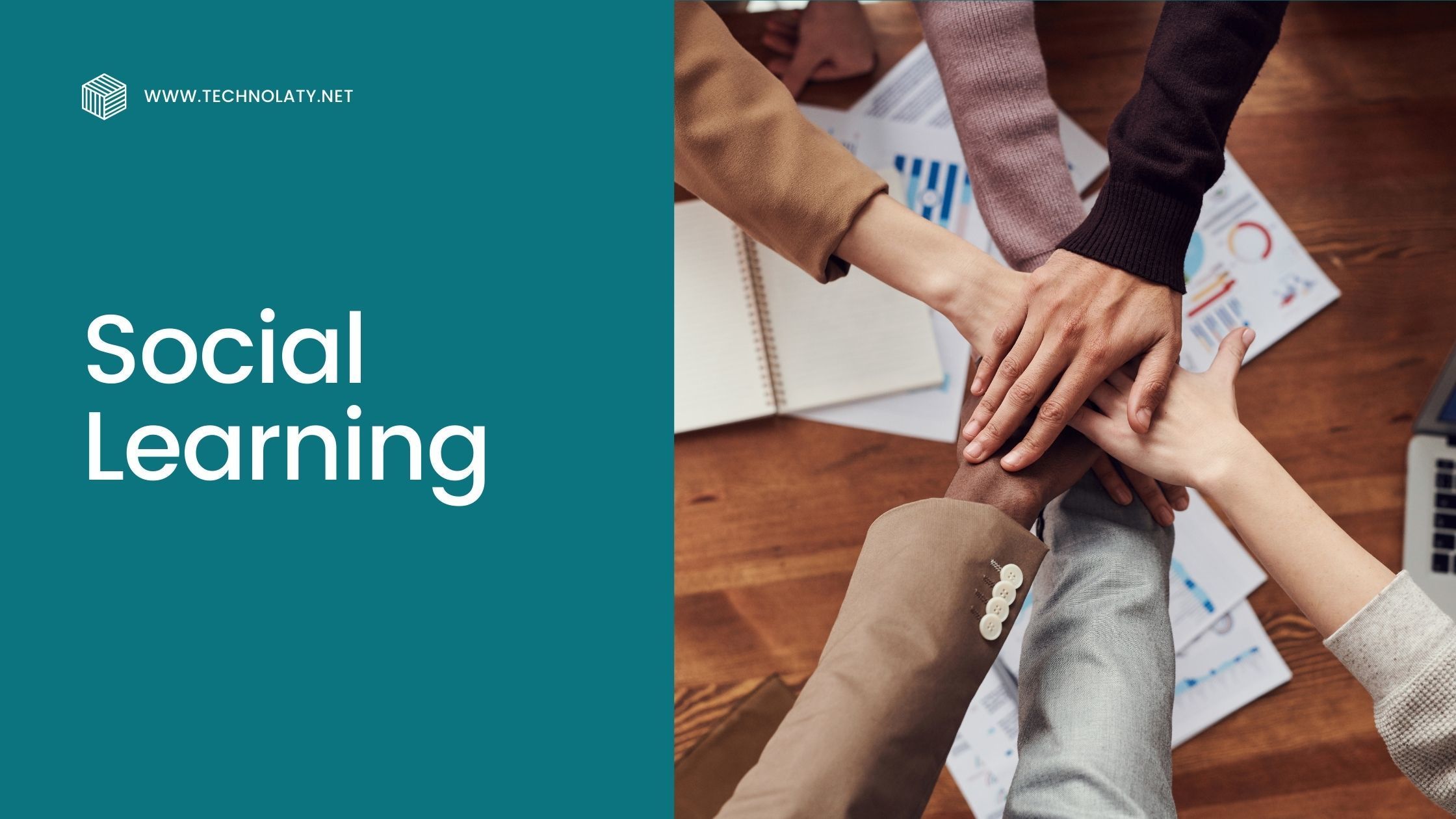Since man is a social animal by nature, social experiences are critical to our growth at all stages of life. Learning is all about how we communicate with people in all aspects of our lives: we speak to them, listen to what they have to say, and then try to incorporate or understand what they have to say (and vice-versa).
Today’s businesses will benefit from social learning to keep up with the speed of their industry. Organizations increasingly rely on social learning to engage e-learning opportunities for their employees, clients, and partners. The idea is more than just a buzzword, and forward-thinking companies are gradually embracing it to promote collective learning and its integration into the flow of work to boost organizational efficiency and L&D effectiveness.
What is Social Learning Theory?
Social learning theory is a hybrid of two different types of learning theories. On the one hand, the cognitive learning theory suggests that psychological influences dictate an individual’s learning. On the other hand, the behavioral learning theory argues that education is entirely determined by how we respond to stimuli in our environment.
In the 1950s, psychologist Albert Bandura and his doctoral student, Richard Walters, founded the social learning theory. According to a condensed social learning concept, humans learn best together. When people are in groups of at least two, learning is encouraged as a mechanism.
In social learning, learners are not passive consumers of knowledge, emphasizing interaction’s importance. According to social learning theory, we learn better when we observe and mimic another person’s attitudes and actions. We are motivated to learn more when we see our “role models” improve their lives and the lives of others through their behavior.
Why is social learning theory relevant?
Social learning has always been integral to learning and retaining knowledge, with informal social learning accounting for 75 percent of organizational learning. But with the rise of remote work, it’s become even more critical. Different types of learning from peers, mentors, and managers, as well as self-reflection, are all part of a well-rounded approach.
There are many advantages to social learning in the workplace. Observing others shows us how to do something and what the consequences can be if we do so. For example, observing a colleague complete a data validation exercise in Excel results in an error message being shown when invalid data is entered. Employees may benefit from social learning because it engages them and helps them remember knowledge through practiced actions or mental and physical “rehearsal” of new skills.
How do we apply social learning theory in the workplace?
Social learning is being used more often and is increasing in organizations. It is becoming more popular than traditional education based on a set of rigid curriculums. Online learning, mentorships, and social learning are modern learning approaches that replace formal education. Both approaches are unconventional but more flexible, affordable, effective, and applicable for workers than traditional learning methods, allowing them much more autonomy and flexibility.
To successfully incorporate social learning in your workplace, you’ll need structure. Ad hoc social learning among your employees through social interactions is one thing; consistent and observable progress with the social learning theory necessitates a more organized approach.
Let’s look at some of Bandura’s main concepts and how to adapt them to eLearning so you can incorporate them into your learning and growth strategy:
Attention: Video and audio would help replicate the workplace dynamic of face-to-face encounters. Virtual classroom technology enables real-time presentations and collaboration, enhancing the illusion that learning is social. Social learning allows workers to remain centered and learn more by reinforcing the belief that a job is new or different.
Retention: Learning Management Systems (LMS) such as GoSkills make communicating with colleagues and fellow students simple via forums and chat features. Group conversations, threaded discussions, and group learning are all examples of social learning.
Employees can learn together, at their own speed, and share their profiles to reveal completed courses using an LMS. People learn by internalizing knowledge and recalling it best when they are close to when they first discovered it.
Reproduction: Discussing and practicing the attitudes, skills, and information your employees learned in a course will make it easier for them to apply these new skills when required. It becomes fun and exciting when practice is enjoyable and engaging, such as through online competitions and events.
Motivation: Gamification is a fantastic way to motivate workers and help them remember what they’ve learned. Learning, like anything else in life, requires motivation. It makes the learning process enjoyable. When an employee does something well and unlocks different achievements, gamification offers the benefits of commitment and motivation through incentives and encouragement.
Conclusion
Employees who participate in social learning are better able to retain knowledge, remain involved, and apply what they’ve learned in their daily activities. Social learning is an excellent addition to any training technique, whether conducted online, offline, or as part of a hybrid learning program that includes microlearning, face-to-face coaching, or video training. Furthermore, since information sharing is essential to human existence, social learning is cost-effective and reasonably simple.
